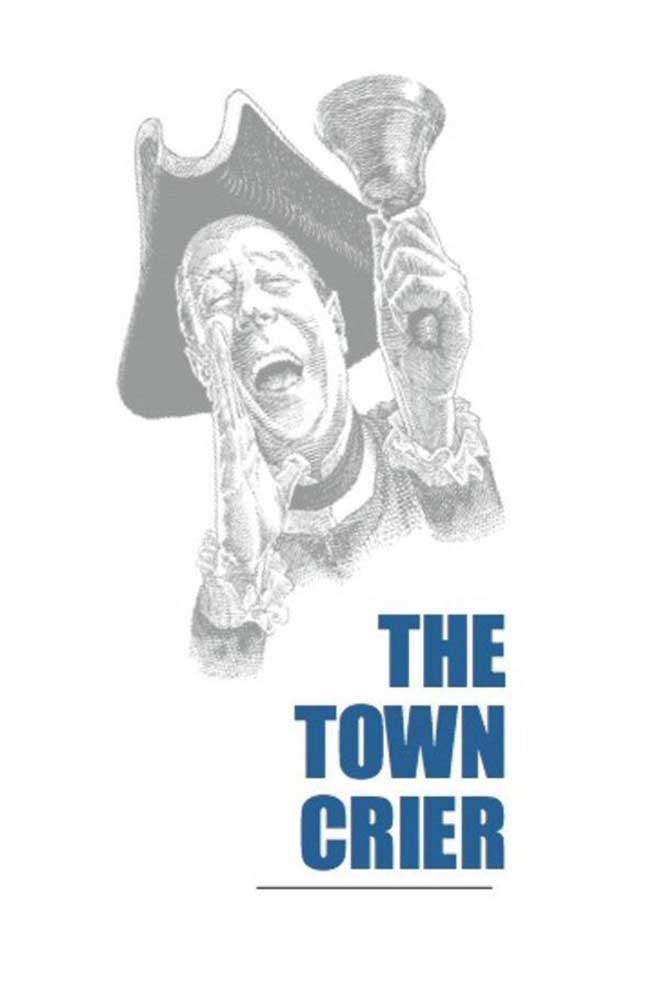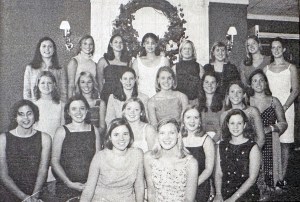The Town Crier: Almost forgotten
Published 11:00 am Sunday, June 5, 2022

- The Town Crier
Where have all the yellow porch lights gone?
Sometimes in interviews for the Town Crier, interviewees will pause after I ask them a question regarding some detail and they will say “I haven’t thought about that in years.”
Trending
The human memory is pretty amazing but so much of what we would remember short term goes away over time, and with more time goes more memories. I think they’re still up there somewhere, but the door got blocked by stacks of other stuff in the way, or the door was locked and we don’t know exactly where (or what) the key is.
Eventually your brain fills up
Every so often a memory will come flooding back when the right clue is given.
My grandmother could name all the kids in all her school classes as long as she lived. I do good to remember the names of some of my classmates that I talk to every other week!
And I have a theory (based on no science whatsoever) that eventually your brain fills up with information and eventually when new stuff comes in it’s going to have to push something else out. Like when I hear the new information of, say, Georgia winning the national championship, with my head so full of other stuff, something somewhere gets pushed out.
I keep waiting to hear something on the news and then realize I can no longer remember the sixth number of my telephone number. It got pushed out, you see, and I visualize it going out one of my ears of course and dropping to the floor.
Trending
‘Didn’t there used to be a (fill in the blank) there?’
Since the Town Crier spends a lot of time in the past, I’m pretty good at going back in my memory to how I perceived things at younger ages. Part of those memories are in thinking/remembering things that were then, but aren’t now.
“Eyewitnesses to History” was a previous article, but sometimes that history can be in pretty minor things. And since we all are stuck living day to day in the present, we don’t always have the time to reminisce about days past.
Of course it also helps to have someone to talk to about these old things. I’m at an advantage since I talk to myself. Usually they are Walter Mitty-type things I’m talking or daydreaming about, but lots of times driving around town I’m thinking “Hey, didn’t there used to be a (fill in the blank) there back when I was a kid?” Or, conversely, “Hey, that didn’t used to be here!” Either way, I’ll start picturing how it used to be.
The last few days I’ve been pondering on some of the things you rarely see now. Yellow porch lights, for example. Seems like years ago, every third house out in the countryside had a yellow porch light. Do they actually keep insects away as alleged? Well, they certainly help. Bugs that swarm lights (as opposed to bugs that scurry from light like cockroaches, aka waterbugs) see cooler colors better than warmer colors.
Light is measured in temperature degrees in the Kelvin range (instead of Fahrenheit or Centigrade). The lower the temperature, the warmer the light and the higher the temperature, the cooler the light. For example, a regular tungsten bulb for your house is about 3,000 degrees Kelvin and so appears warm or “more yellow,” and sunshine is about 6,000 degrees Kelvin so “more blue.”
Again, this is the color light temperature of the sun, not the heat temp. The sun is about 10,000 degrees Fahrenheit. With temperatures that hot, it’s rumored that the first human mission to the sun will be sent at night!
If you go to the hardware store today … excuse me, building supply store … you’ll see the temperature ratings of the light bulbs on the box and there are frequently little lighting displays where you can push a slide that makes a light bulb warmer or cooler. Hey, wait, how did this turn into a science lesson? Oh, yeah, we were trying to get rid of bugs on the porch at night.
Yes, yellow does help, and according to some new evidence LED yellow bulbs are even better than the old tungsten types since they are a more pure yellow light. On the other hand, there is still something deeply gratifying about a well-placed swing with a flyswatter.
Another thing you don’t see as much anymore are the little holes that scar the sides of telephone poles. Used to be, cherry pickers were used for only the biggest jobs.
Everything else relied on a lineman shimming up a telephone pole with a set of spikes strapped to his legs, with sharp metal points sticking down below his boots. The little prongs would bite into the wood as he made his way up to the top of the pole.
As a kid I would watch these guys climb up a pole in no time flat, getting their left foot/right foot rhythm going faster and faster.
The other necessary piece of equipment to make this work was the over-sized belt the lineman leaned back into. His force backward kept him from sliding down. A triangle was formed between the pole, the boot spikes in the wood and the man’s back leaning away from the pole. With skill and dexterity he would step climb up the pole, releasing the tension against the belt just long enough to slide it further up the pole. A few times I’ve seen two linemen up a pole at the same time, but never three.
Now, there might be a parking lot’s worth of power company trucks on both sides of the road and a mad zig-zag of cherry picker arms towering into the sky as a whole crew maneuvers their way into working position. It’s more epic and a lot safer, but there was something athletic akin to a circus performer in the old-fashioned way.
A neat thing to look at
I was looking at some of my dad’s pictures from when he was a teen and he and a group had driven out on an outing to Copper Hill, Tennessee. Somewhere along the way they stopped for pictures on a bridge and the metalwork of the bridge added a lot of visual interest to the picture.
At least for Whitfield County, there are no more metal truss bridges that I’m aware of. Almost every crossing of the Conasauga River was a metal truss bridge, most if not all single lane.
Some had a wooden roadbed and some were concrete, but they were a neat thing to look at and they didn’t hide the view of the river.
These days you can cross a river and unless you’re in a vehicle tall enough, like a semi or a monster truck, the solid concrete walls keep you from seeing any water. With the steel truss bridge you could get a good view between the metal beams on both sides.
With the single-lane, wooden roadbed bridges I’ve sat there and waited for the other vehicle to come across and then it was our turn to cluk-cluk-cluk across as each board rattled a bit as you drove over it. The last bridge like that I remember driving across was a small one crossing Mill Creek on Willowdale Road. Not only is the bridge gone these days but so is the road that crossed it.
Another metal structure that has gone the way of the bridges is the big microwave towers that used to dot the nation. There was a big one downtown with big, circular metal “drums” (I called them) on the sides pointing in different directions.
AT&T started a microwave network or “skynet” in 1951. This was the first time major communications would not go over landlines. This system was used for everything from telephone to TV to secret military communications.
As a product of the Cold War, many towers had control buildings that were hardened to withstand an atomic blast as well as redundant and protective measures to keep them going in the event of a nuclear war.
There were many of them since they relayed signals “line of sight,” meaning each tower had to be able to see directly to the next one. Dalton was along one of the routes and so with our mountainous terrain we had many more in our area than a place like Nebraska or Florida where it’s flat and you can see further.
I never thought much about the towers since they had always been there in my lifetime. But eventually new technologies came along such as communication satellites and fiber cable, and the old microwave net was gone by the 1990s. Some towers are still around, just not using microwaves. Now they are abandoned or repurposed for cellphone usage.
Things like yellow porch lights, pencil-sized holes on the sides of power poles and metal bridges are just small things, but they were details that made up the world at the time, just like the big history-making wars and politics.
But for the majority of people, the small details were what they saw daily rather than presidents or kings. I say the landscapes of old are the memory-scapes of today!





